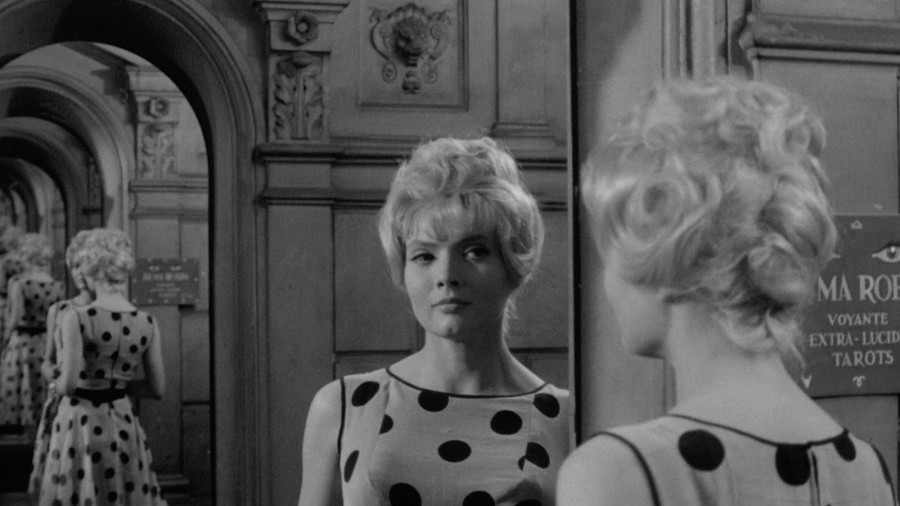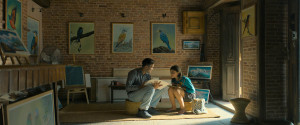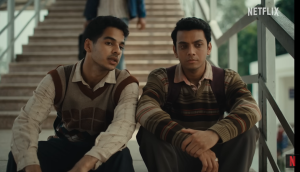Movies
Heroines vs female characters
In a male-dominated Nepali film industry, many filmmakers might not even know how to show female experiences with much-needed screen time and space.
Shuvangi Khadka
A recent research report by Docskool, a network based film campaign that promotes and supports best practices in South Asian cinema, revealed that in Nepali films portrayal of women is reduced to three inter-relatable yet distinct templates: women as providers of sexual pleasure (lovers), women as gatekeepers of morality and culture (wives), and women as providers of warmth (mothers).
These templates largely have been tropes for generalising female characters and limiting them on screen. This could also be an easy stroke of getting rid of having to deal with female complexities. In a male-dominated film industry like ours, many filmmakers might not even know how to show female experiences with much-needed screen time and space. Their patriarchal mindset has often trapped the few who have attempted. So, from where do we draw our lessons?
A recent Hollywood movie ‘Nomadland’ created quite the buzz with the second Oscar win ever for a female director. The film tells the story of a 61-year-old widow (played by Frances McDormand) who navigates her life in the backdrop of a crippling recession in a post-2008 America. She starts living in a recreational vehicle (RV), changing towns every few weeks. She runs into the wild, away from societal norms. The character is unlike any 60-year-old woman you have seen in the movies.
Most of the stories about characters seeking adventure or attempting to find themselves revolves around young characters. But Nomadland tells such a story from the viewpoint of an elderly woman, offering not just excitement but a close melancholic brush with desperation and death.
For me, the transformation in the female character living a nomadic life almost translated to a coming-of-age movie experience. With women of such an age group confined to playing roles of someone's mother or grandmother, it was rare to see the movie’s elderly female characters sharing their dreams and wisdom based on an experience of living and surviving in isolation.
A pioneer in building complex female characters during the 1950s, a period when male protagonists and underlying patriarchal ideals dominated film-making, was French filmmaker Agnès Varda. One of her most popular films, ‘Cléo from 5 to 7’, centres on a complex, contradictory female singer. Outwardly, the character craves attention and sympathy from people, while on the inside, when she is alone, she is almost egoistic about her beauty. Beauty is fundamental to Cléo's sense of self as she enjoys validation in embodying femininity as an object. Cléo, in a strict sense, may not seem like a feminist heroine. Instead, the film is about Cléo negotiating the conflicts and ambiguities women encounter within a patriarchal society.
Simultaneously, Cléo is consumed by her fellow Parisians as an object and a commodity. Men inside a car try to catch a glimpse of her while everyone else stares at her on the streets. Varda plays with the idea that a woman's primary purpose is to be an ornamental object—something to gaze at. But there is an impending prognosis of cancer that could strip a woman’s primary function (as recognised by a patriarchal society) to remain desirable. This crisis of self-representation sets the tone for the struggle suffered in silence by cancer-afflicted women in the 60's, wherein Cléo attempts to locate a self in which she is entirely in charge.
The French film industry is really concerned about subverting a gaze forced by the male narrative that looks for voyeuristic pleasure. Particularly, the new generation of female directors has been making rounds for making movies from a female point of view.
One such example is Céline Sciamma's film ‘Portrait of a Lady on Fire’. This movie retells the tragic story of Orpheus and Eurydice from the perspective of two lesbian lovers. All three titular female characters in the film seek a way out from the oppressive patriarchal structures where women are objects for exchange and their roles are limited by the men as wives, mothers, and housekeepers.
In ‘Cléo from 5 to 7’, Cléo wanders around the streets of Paris resembling an image of a flâneur (a male figure of privilege and leisure) with the time and money to roam around the city leisurely, predominantly in the 19th century.
It has been widely acknowledged that the image of flâneur is rarely seen as a female. Despite walking the same streets, historically, women haven't always shared the same privilege of anonymity or drift in the urban setting. They are far less free to amble in the streets than their male counterparts. Part of it is how restricted they are owing to their domestic responsibilities. At the same time, the other more concerning part is safety. As a female, wandering on the streets alone is an act of survival: from dealing with the leering looks to handling unwanted actions directed at you.
When films show female characters, it is important to note the settings and locations they are put in. This helps us think about the spaces women usually occupy and spaces they do not occupy. The way Cléo wanders around the streets makes you question if other women too have that privilege to wander aimlessly in the streets. Laying claim to flâneur has enabled women to reroute the paths they were expected to take and disrupt the lives they were expected to live. To write or make art in those spaces is a way to reclaim them.
Another director recognised for creating quite complex female characters is Edward Yang. He is especially lauded for envisioning the vast demography of females as characters. They range from teenage girls, middle-aged to elderly women.
One may wonder if he can stay true to the narrative being a male filmmaker. In an interview, Yang answered, "The female perspective provides a better angle for understanding what is going on. It allows the audience to keep in better touch with the sensitivity of the subject matter."
In his movie, ‘Terrorizers’, a married couple pursue success in separate fields: husband as a doctor and wife (Zhou) as an aspiring writer. Their relationship is defined by the wife's sacrifice, tailoring her dreams as a writer to fit the necessities of marriage, and his anguish at being unable to make her happy. Yang skillfully reveals the underlying tension between traditional and modern ideas of female roles and then stretches it to the breaking point until Zhou leaves her husband. Taking a middle shot of Zhou as she confesses to her husband, she even breaks the fourth wall for brief moments. As an audience, we may not agree with or respect the character’s choice of escaping a mundane marriage. But we are compelled to listen to her as she takes centre stage.
In the modern world, even though women are said to have multiple choices at their disposal, the fact that they still have to make a single choice and set a fixed priority is largely overlooked. You can't marry if you have a career. You can't have a job if you have a baby. Sacrifices are considered intrinsic to female lives. And these are the lives we see on screen. A female character becomes bound by social values and is never explored as an individual.
Maybe for once, a married woman is shown as an individual instead of portraying her as a bickering housewife. Maybe filmmakers ought to start looking into what makes that character act that way and explore her character development.
Film critic Laura Mulvey says that by controlling the dimension of time (editing, narrative) and space (changes in distance, editing), cinema creates a gaze, a world, and an object.
In Nepali films, the gaze often reduces women into likeable characters as caring mothers, dutiful wives, and obedient daughters. This gaze fits well with the societal mindset. But the cinema also carries with it the possibility of shifting the look, going beyond what is already in the society, and exposing alternatives of what could be. It is high time filmmakers see this not only as a possibility but a responsibility.




 14.12°C Kathmandu
14.12°C Kathmandu














